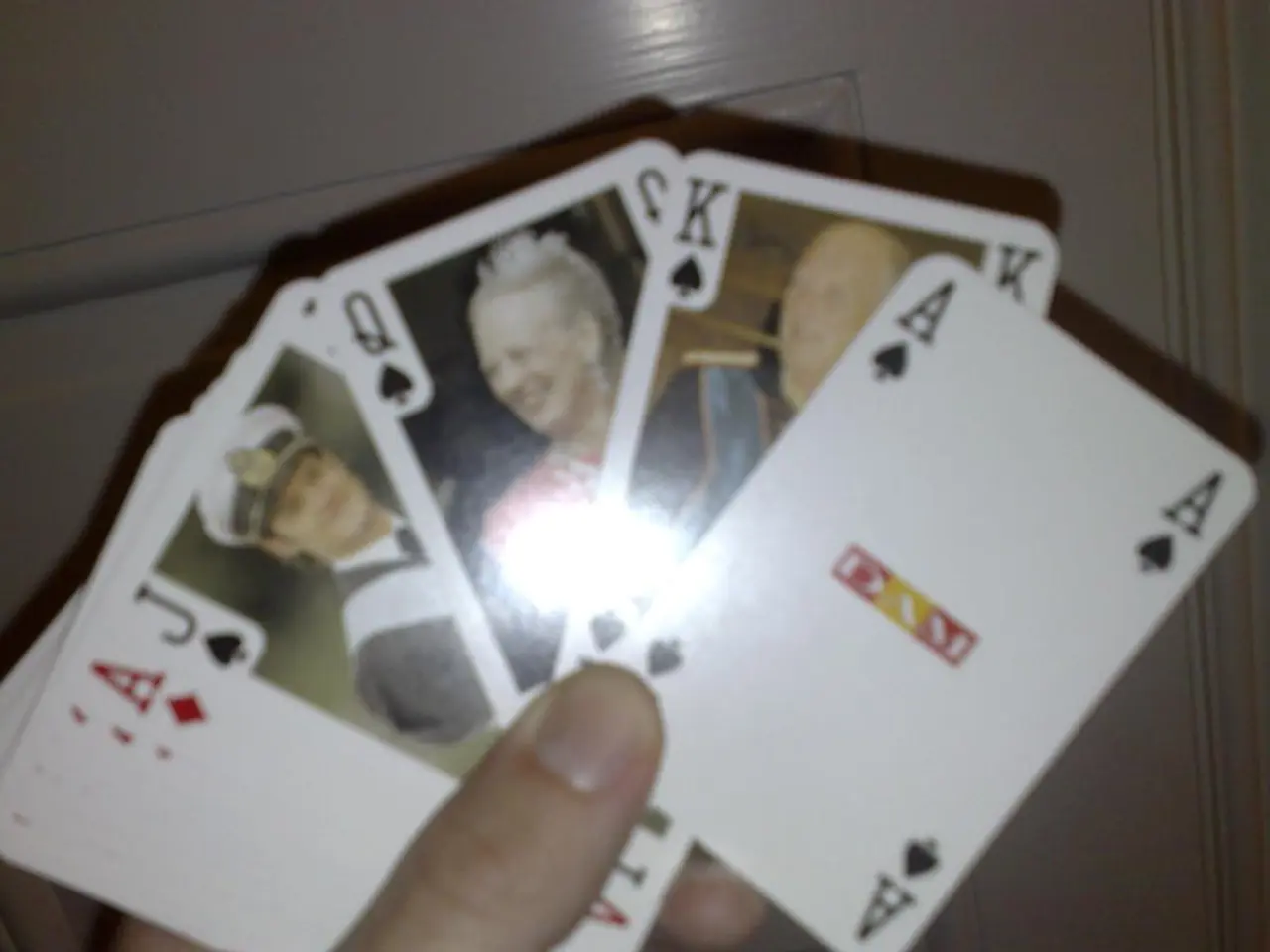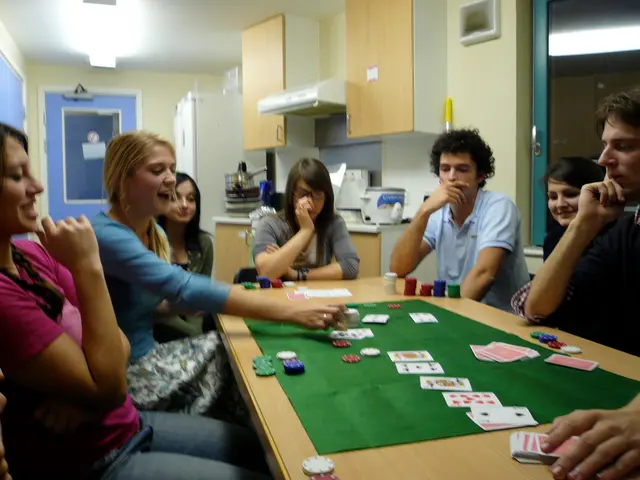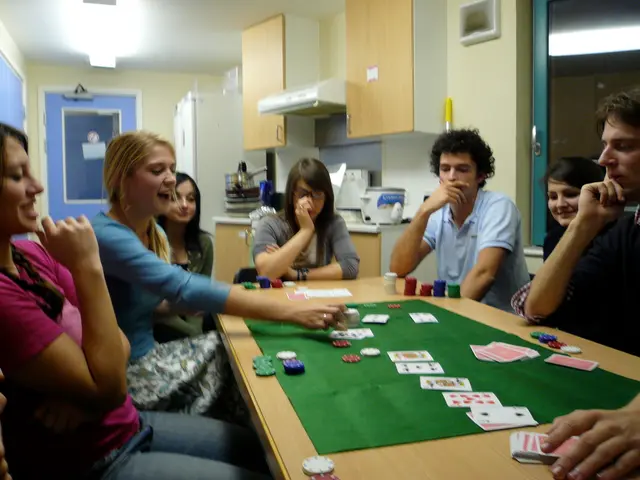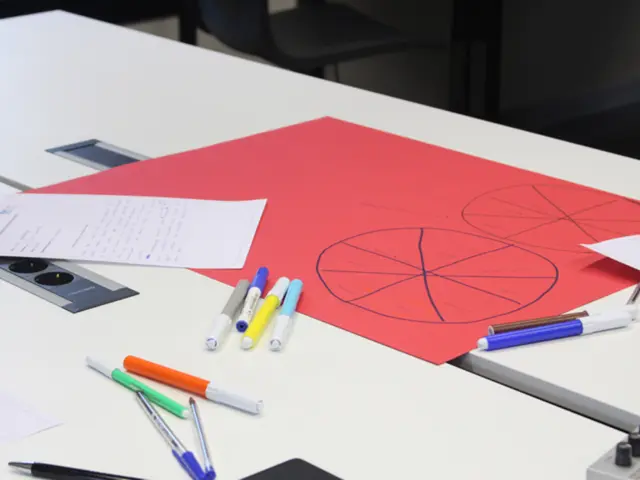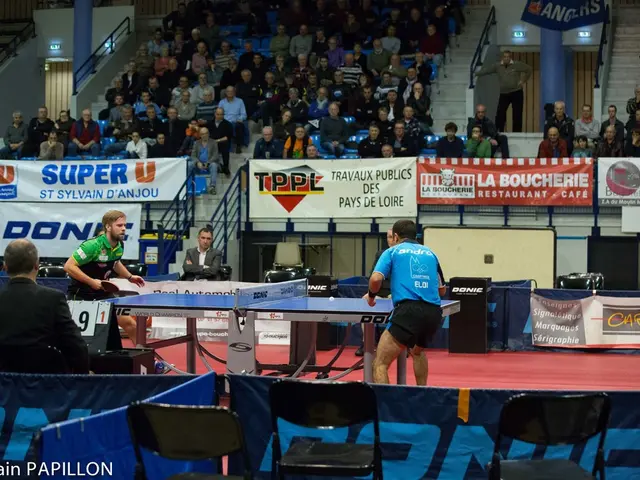Bobby Ruthledge finishes in third place, earning a prize of $4,470 in the competition.
In a thrilling display of poker strategy and board texture analysis, Jerry Li emerged victorious in a hand against Bobby Ruthledge during a recent high-stakes poker game.
The hand commenced with the flop revealing 6♥A♥3♣, a seemingly innocuous board that saw Ruthledge holding a strong top set or trips with his Aces and Six, while Li's 8, 6, 3, 5 combination appeared weaker. However, the game took an unexpected turn with the turn card coming up as 2♥, setting the stage for a dramatic river.
The final card, 4♣, completed the board, transforming the seemingly weak hand of Jerry Li into a winning one. The 4♣ and 2♥ combined to form a straight sequence (6-5-4-3-2), a hand that only Li's holding could utilise, given his 5♣ and 3♦ in his hand. This outcome underscores the importance of paying attention to board runouts that complete straights or other strong hands, especially when they involve connected cards in an opponent's hand.
The hand strength versus board development played a crucial role in this outcome. Although pocket Aces are typically the strongest pre-flop and often post-flop hand, they can be beaten by straights, flushes, or full houses that develop later on. In this instance, Li's seemingly weak combination on the flop became a winning straight by the river due to the 4♣ and 2♥ coming in.
Poker strategy involves predicting possible draws and holding combinations that opponents might have given the board texture. Players must consider potential straights during betting decisions, especially when the board develops connecting or sequential low cards. This hand serves as a prime example of the importance of hand reading and betting strategy in poker.
Poker literature and forums often stress caution when holding overpairs or top pairs on boards that coordinate too well for opponents' drawing possibilities. Even pocket Aces can be vulnerable to straights, as demonstrated in this hand where Li's low connected cards enabled him to complete the straight on the river.
In summary, the outcome of this hand was determined by the five-card combination from hole cards and board cards, with the board development enabling an initially weaker hand to surpass a stronger starting hand. This hand serves as a reminder that in poker, the best hand is not always the one with the strongest starting cards, but the one that can utilise the board texture most effectively.
The pot changed hands in this round, but the exact outcome (win or loss) for Bobby Ruthledge was not specified. Regardless, this hand will undoubtedly go down as an example of strategic poker play and the importance of paying attention to board texture in high-stakes games.
Jerry Li's victory in the high-stakes poker game was not solely due to his starting cards; it was a testament to his ability to read the board texture and anticipate potential draws. The seemingly weak combination Li held on the flop, 8, 6, 3, 5, transformed into a straight by the river when the final cards, 4♣ and 2♥, completed the sequence. This hand serves as a demonstration of the significance of paying attention to board runouts, especially for connected cards, in casino-and-gambling games, such as poker, where casino-games like poker demand players to consider the implications of straights during betting decisions.
